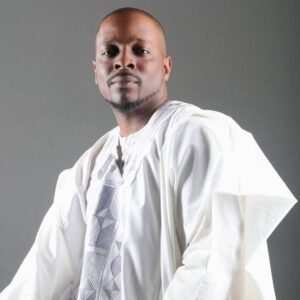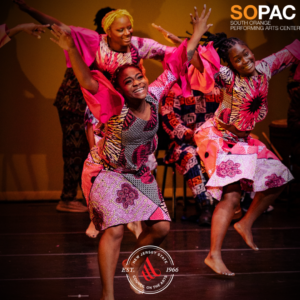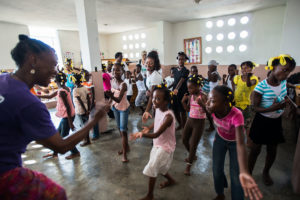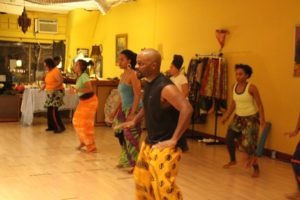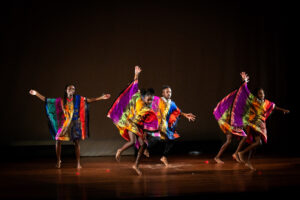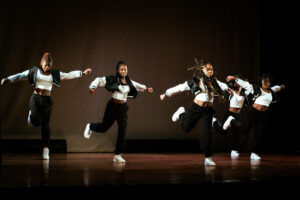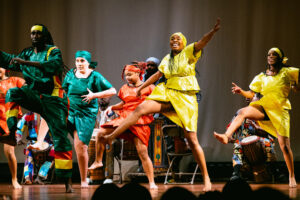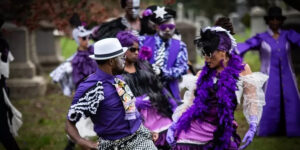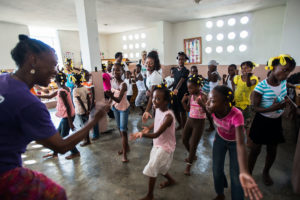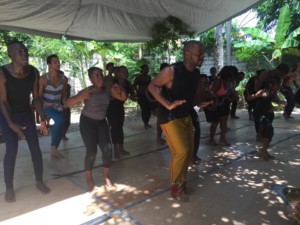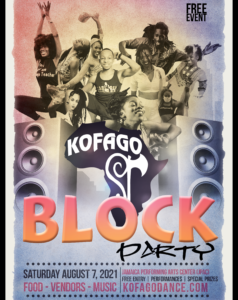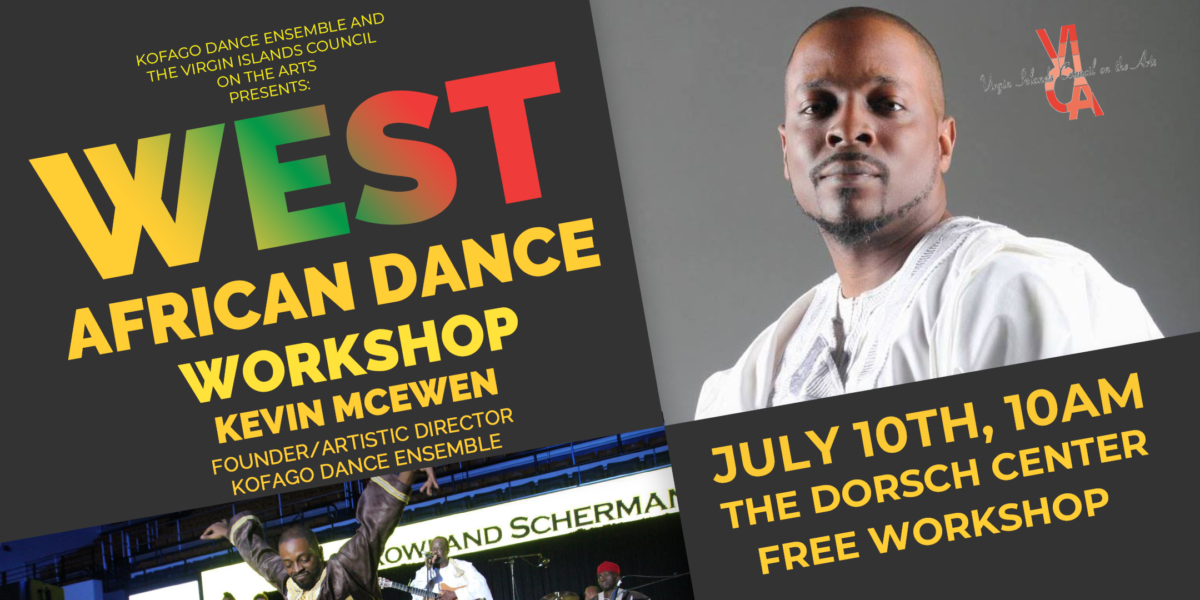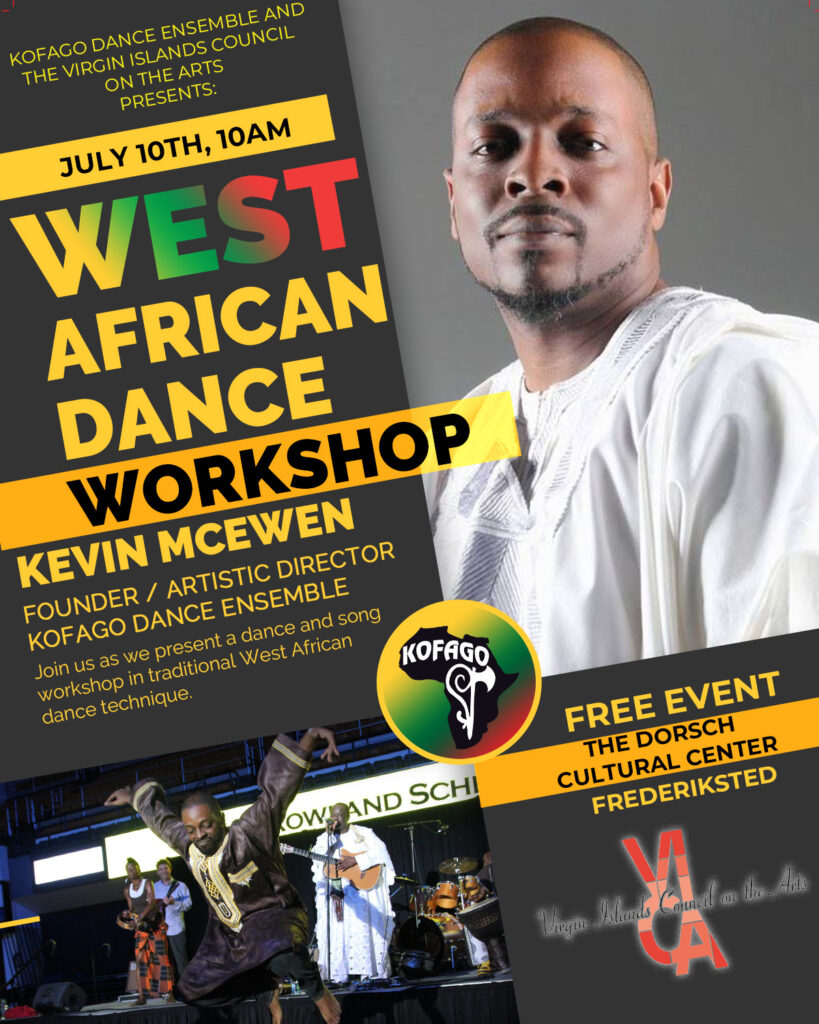The art of dance is a crucial component of many cultures, serving as a medium for expression and preservation of cultural heritage. In recent years, the call for diversity and representation within the dance community has grown, particularly with regards to Black Indigenous People of Color (BIPOC) communities. This includes representation within dance education and the role of dance educators.
The representation of BIPOC dance educators is crucial in providing access to accurate, culturally-sensitive education to students of color. Research has shown that students perform better academically when they can identify with their teachers, and the same is true for dance education. For BIPOC students, having access to BIPOC dance educators can serve as a source of inspiration, motivation, and validation of their cultural heritage.
Dance educators from BIPOC communities bring a unique perspective to dance education, combining their cultural heritage with academic knowledge to create a well-rounded education. They can provide a deeper understanding of the cultural and historical context of various dance styles, as well as their place within society. This type of education not only provides students with a better understanding of dance, but also with a greater appreciation for the cultural diversity that exists within the world.
Despite the benefits of representation, BIPOC dance educators are still vastly underrepresented within the dance education community. According to a survey by the National Endowment for the Arts (NEA), the majority of dance educators in the U.S. are white, with only 20% identifying as being a part of the BIPOC community. This lack of representation limits the cultural perspectives available to students, perpetuating the erasure of BIPOC voices within the dance community.
It is important to note that the lack of representation of BIPOC dance educators is not due to a lack of qualified candidates, but rather to systemic barriers such as institutionalized racism and implicit bias. In order to address this issue, dance institutions must make a concerted effort to increase diversity and representation within their hiring practices, and to create inclusive environments for BIPOC dance educators.
Representation of BIPOC dance educators is essential in providing students with access to accurate, culturally-sensitive education and in promoting diversity and inclusivity within the dance community. It is up to dance institutions to take action to increase representation and create inclusive environments for BIPOC dance educators.
Sources:
- National Endowment for the Arts. (2019). National Endowment for the Arts Dance: Survey of Public Participation in the Arts. Retrieved from https://www.arts.gov/sites/default/files/2019-dance-participation-report.pdf
- The Importance of Teacher Diversity. (n.d.). Teach For America. Retrieved from https://www.teachforamerica.org/stories/importance-teacher-diversity
As an educator, I’m concerned about what happened in Florida this past week. Florida governor Ron Desantis administration rejected a proposed AP African American Studies class in Florida high schools. This type of institutionalized racism is dangerous on so many levels. As a collegiate professor, this also makes the work that I have to do even harder.
For the past twenty years, my work has been to promote traditional West African dance and culture. One of the best ways of promoting culture is through finding interescionality with other departments and programs where I teach. The integration of black dance programs into Africana Studies programs at the collegiate level would have a number of benefits for students and for the field of Africana Studies more broadly.
Incorporating black dance into Africana Studies would provide students with a more well-rounded understanding of the African diaspora. Dance is an important aspect of many African cultures and has played a central role in the preservation of tradition and cultural identity. By studying the history and theory of black dance alongside the literature, history, and other subjects that are typically included in Africana Studies programs, students would gain a deeper understanding of the complexity and richness of the African diaspora.
The proposed intersection between black dance and Africana Studies would also provide students with an opportunity to engage with the material in a more hands-on, experiential way. Instead of just reading about the history and theory of black dance, students would have the opportunity to learn the techniques and choreography of different black dance styles, which would enable them to better understand and appreciate the cultural context in which these dances were developed. This can help to make the material more relatable and meaningful for students.
Incorporating black dance programs into Africana Studies programs at the collegiate level would provide students with a more well-rounded understanding of the African diaspora, allow them to engage with the material in a more hands-on, experiential way, and help to revitalize and invigorate the field of Africana Studies. Furthermore, it would be a counter to the racist attacks against African American studies by politicians like Ron Desantis.
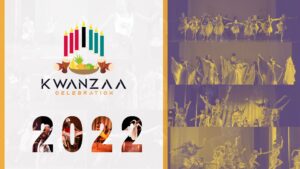 This holiday season marks an exciting milestone for the Kwanzaa Celebration – it is the fifth anniversary since its inception! This performance, produced and directed by Kevin McEwen, has grown into a memorable tradition in New York City over the past five years.
This holiday season marks an exciting milestone for the Kwanzaa Celebration – it is the fifth anniversary since its inception! This performance, produced and directed by Kevin McEwen, has grown into a memorable tradition in New York City over the past five years.
The production was made possible through the collaboration of many organizations and talented individuals. Queensborough Community College, Rhythm N Dance, The Jamaica Center for Arts & Learning and the Kofago Dance Ensemble all worked together to make this event one of a kind.
The show featured African Diasproic dance forms such as Sabar dance from Senegal, Hip-Hop, Modern and Afrobeats. It also included a live drum call led by D’Jembefola Jean Lemke Charlot and Master of Ceremony duties by 1Pablo (Paul Lee) who spoke to the audience about Kwanzaa’s cultural significance.
Kwanzaa Celebration has become a staple in our community, celebrating African Diasporic culture in the beginning of December each year. This year, we had two shows which seemed like the natural evolution of the work we’ve done for the past five years.
On December 9th, 2022, the first annual Kwanzaa Celebration Youth Performance kicked off with a bang, featuring some of the best performing arts groups in the area.
The Phoenix Dance Ensemble from First University Prep in Brooklyn put on an incredible show with their signature choreography by their director, Afaliah Tribune. The Sesame Flyers International Youth Dance Ensemble (under the direction of Acharo Smith and Vuyelwa Thom) from Brooklyn brought their mix of Caribbean rhythms and creative movements to the stage. The Batingua Arts Youth Ensemble, directed by Persephone Dacosta showcased dazzling African and Caribbean dance moves. Infinity Blueprint (directed by Tanasia McCorey) from Long Island provided a much-needed dose of soulful Hip-Hop choreography. And last but certainly not least, the A.R.E.A Collective from Harlem delivered an electrifying performance full of Hip-Hop beats and melodies.
It was truly a sight to behold! Not only did these talented young artists show off their skills, but they also demonstrated how powerful art can be when it brings diverse communities together for a shared purpose. As we celebrate this inaugural Kwanzaa Celebration Youth Performance, let us continue to support our young performers as they strive to reach their highest potentials!
The second show on Sunday, December 11th, was our signature show celebrating our fifth anniversary of our production. Featuring talented dancers from Kofago Dance Ensemble, Queensborough Community College Dance Program, REACH Collective and the Kwanzaa Celebration cast, this performance was truly an occasion to remember!
Every moment of the two hour long show was nothing short of remarkable. From Bakary Fall’s powerful traditional Sabar dances
to Tanasia McCorrey’s innovative hip hop numbers and Mama Taylor’s captivating Lengen routines, each piece brought its own unique flavor to the mix. Even Aicha Konaté’s Afrobeats choreography with the QCC Dance program managed to evoke emotions in all who experienced it.
From my position as the producer and director of the show, it was clear that each choreographer took great care in crafting their pieces for this special event – from artistic vision to technical execution. The entire performance flowed seamlessly from start to finish, providing an exciting show full of energy and passion.
This year’s Kwanzaa Celebration 2022 was both an inspiring cultural display and a world-class performance – an unforgettable experience that will linger in our memories for years to come!
2022 is here! We’re are now two years in with having to deal with a pandemic that has truly changed the way we all live and interact with each other. COVID has taken a lot out of me, as it would many people. COVID is so much more than just a virus. COVID has crushed the notion of freedom to connect and commune with others in many ways, especially within dance communities. I am not sure where we go from here.
For four years straight, I produce and direct a production entitled the Kwanzaa Celebration. On Saturday December 11th, Kofago Dance Ensemble, the Jamaica Center for Arts and Learning and Queensborough Community College presented Kwanzaa Celebration 2021: The Legacy Continues. Honoring the fifty-two year long tradition of Kwanzaa, Kofago Dance Ensemble and Queensborough Community College pulled together a performance that pays homage to this beautiful holiday. we even got coverage of our event from Channel 2, CBS News, which was truly appreciated. After everything was done, I couldn’t wait to take a much needed vacation to clear my mind and take a break from what was a truly strenuous year.
Unfortunately, that never happened. The Omicron variant had other plans. Flights were cancelled due to people getting sick in such large numbers. Lines for COVID testing were now hours long instead of the walk-ins we were used to just some weeks ago. Everything started to trend in the wrong direction.
COVID has truly taken so much from us. It seems that every day we lose something else; our sense of normalcy, our freedom to congregate and celebrate as we please, and sometimes even our lives.
I am tired. I hope that 2022 will bring some healing and a better outlook on the future but who knows what COVID will take from us next.
My hope is that my local community gets more proactive about delaing with this pandemic. There’s way too many people out here who are not vaccinated. I’m literally seeing people in my community lose their lives to this virus. Knowinfg that they could’ve been vaccinated and they chose not to is very concerning. In anideal situation, I would love for COVID to take a break and let me enjoy travelling again, but the pandemic seems to have other plans for now. I just have to accept it and keep going on with my life as best as I can until COVID decides that maybe 2022 is the year we all get our lives back.
Writing a paper on Haitian culture can go in so many different directions. I could write about the obvious bits of information that most people may know about. I could write pages upon pages about Haiti being the only country to be a European colony that fought and won its freedom from its colonizers. I could also write about the people who build such amazing pieces of architecture like the military fort known as Citadelle Laferrière in the town of Cap Haitien. I could even write about the contemporary culture of the Haitian people that gave us the musical gifts of Da Fugees founder and lead artist Wyclef Jean and their artist-turned-president Michel “Sweet Mickey” Martelly.
There are so many different directions a writer could go with writing about Haitian culture, however this essay will focus on the performance ethnography of the Haitian people. This information is tethered to the lifestyle of the Haitian people, which will allow us to briefly touch upon several different facets of Haiti that include, religion, spirituality, history and culture.
If you want to look for some the most battle-tested while simultaneously battle weary people of the African Diaspora, look no further than the island nation of Haiti. The people of Haiti have been in a perpetual state of war against their way of life since the French Revolution. It was during the French revolution when the slaves of African descent fought against Napoleon Bonapart and the people of France to become the only country to fight and win its freedom from its colonial oppressors. Since that historic victory, the people of Haiti have been under attack in some shape from opponents like the World Bank and even the United States government.
In our society, the mark of individual success is driven by one’s financial and social standing. If you subscribe to these societal norms, then the average Haitian would appear to not have much. The World Factbook reports a shortage of skilled labor, widespread unemployment and underemployment, saying “more than two-thirds of the labor force do not have formal jobs.” Looking at it from this perspective, the situation in Haiti does look quite dire and bleak, however Haitians are known for being survivors that cling to a very traditional warrior spirit. This “Traditional Warrior Spirit” goes back to the days of the Haitian Revolution, where the enslaved population of the then “Saint-Dominique” drove out the Spanish, French, and the British colonizers to lay down the foundation for what we now know to be both Haiti and the Dominican Republic. In looking at the historical aspects of Haitian culture, one cannot leave out the ceremony of BWA KAYIMAN (Bois Caiman), which took place August, 1971 near the city of Cap Haitian. It was this spiritual ceremony that began the Haitian Revolution. Led by the Vodou priest (which is also known as a Houngan) known as Dutty Boukman, the ceremony laid down the foundation for those who were enslaved to pledge themselves to the fight for freedom.
In understanding what Haitian folkloric dance and drum culture is, one must understand how this country came to fruition. The same rhythms and music played at Bwa Kayiman are the same rhythms that are played today in Haitian folkloric dance workshops. Diving in further into the culture, the Vodou tradition has spiritual entities that are divided into two major categories; HOT or COOL. Cool spirits fall under the Rada category, and hot spirits fall under the Petwo category. This information is critical, as most dances performed within Haitian Folkloric dance, falls underneath these two different categories. For example, a dance done for Ezili Danto would be danced to a Petwo Rhythm, while a dance done for La Siren would be dance to a Rada Rhythm.
In closing, there are many facets to the people of Haiti and their culture. I always tell people that if you want to learn the truth about Haiti, you have to visit the Caribbean nation. You have to talk to the people, eat some of there cuisine and don’t buy into what Hollywood has been selling regarding its cultural identity and legacy.
Living through a pandemic is something generations before us didn’t have to deal with. The Corona Virus and is global reach is something we will all tell future generations about. I will be honest in saying that it’s been quit the struggle as a professor to teach dance classes via Zoom and similar platforms. The technology itself wasn’t the issue, but it was the lack of connection to my students that I truly miss.
As more and more people get vaccinated, there’s been a loosening of the COVID restrictions (some would say that they rushed that part of the process). The members of Kofago Dance and I have been hard at work to bring you the content and events you didn’t even know you needed!
Our GENERATIONS dance workshops have been a huge success! In addition to the GENERATIONS workshops, we’re excited to bring to you our first (and hopefully annual) KOFAGO BLOCK PARTY! Growing up in Brooklyn, block parties where great events that brought the block/neighborhood/community together. The Kofago Block Party will do the same thing. We will celebrate life, community, culture and dance in a way that represents who we are as a company.
The event takes place on Saturday, August 7th from 2-8pm and we have a whole host of activities and entertainment waiting for you to come and check out:
- Akoko Nante Drum Ensemble
- Batingua Arts Youth Ensemble
- Royal Majesty Dance Company
- Escape Room by Nadia Simmons
- Body Ra Movement
- CarNYval Dancers
- Yoga with Keziah
- Plus three amazing DJs (DJ C-Live, DJ Matt, DJ Turn Up)
We’ve got some activities lined up for the kids as well (face painting, arts 7 crafts). All of these events and activities are with the sole intention of bringing our community back together after being separated for so long. It’s no coincidence that this event will take place at the Jamaica Performing Arts Center (JPAC), which is the same location of our last live Kwanzaa Celebration performance in 2019.
Make sure you click the links above to follow the artists who will perform at the block party. For people who are interested in vending, please click the link here to register.
By King County Executive Dow Constantine and Public Health — Seattle & King County Director Patty Hayes
“There’s nothing new under the sun but there are new suns.” Octavia E. Butler, Parable of the Trickster
Today, we declare that racism is a public health crisis. Public Health – Seattle & King County and all of King County government are committed to implementing a racially equitable response to this crisis, centering on community.
King County government and Public Health – Seattle & King County are committed to working in stronger and better resourced partnerships with community organizations and leaders to disrupt and dismantle racism and protect the health and well-being of Black, Indigenous People and People of Color. We recognize that historically and currently King County has been complicit in maintaining and perpetuating structural racism, and that as an institution we must be a vital player in dismantling oppressive systems that are grounded in white supremacy.
Community leaders and organizations will be provided resources to develop solutions. We make these commitments because we know that together we can stop both disease and racism, and lay the foundation for a better, stronger community.
We will use quantitative data, including data about racial inequities, along with voices and know-how from community leaders and residents to get to solutions that work and that are sustainable.
We will share power and resources and work on community-defined problems using community-driven solutions. We commit to working side-by-side with anti-racist organizations, driven by people most negatively impacted by racism. We commit to convening other jurisdictions and agencies across sectors and to creating shared, measurable accountability.
White privilege and anti-blackness cannot be fully addressed until the same systems that have “worked just fine” for white people, while acting as the foot of oppression for indigenous, Black and brown communities are dismantled. In its place, we need new systems coming from the communities most affected by racism, oppression, and colonization.
To confront this crisis, we will adopt and commit to a new “Anti-Racism Crisis Response Bill of Rights.” Our duties will include principles such as, do no harm; co-create with those most vulnerable both in the short- and long-term; provide safe, respectful and culturally responsive care, services and information, delivered in a manner centered in BIPOC communities; and provide access to crisis-related services and resources for all community members and provide redress to community members within established mechanisms when barriers or gaps are identified.
Using the current pandemic as an example, we see how COVID-19 is a new crisis on top of the existing crisis of racism, and we see how racism – despite amazing community resiliency – is an underlying root cause of the disproportionate impacts on communities of color.
King County will drive resources toward where they are needed most as indicated by those in that community. As we move into recovery from the pandemic, we cannot make the same mistakes made in the 2009 “Great Recession” that systematically stripped household wealth from black and brown communities.
In 2008, then King County Executive Ron Sims joined with Public Health to launch the Equity and Social Justice Initiative. Working with the County Council, Executive Dow Constantine and the King County Council subsequently passed the Equity and Social Justice Ordinance. In 2016, King County’s six-year Equity and Social Justice Strategic Plan led with racial justice.
While King County government has made strides for more than 12 years to operate in an equitable and socially just way, this crisis demands that we do more to transform our systems.
To respond to the crisis of racism, we will continue to change our organizations so that we can be the highest performing local government we can be. We commit ourselves to working in true partnership with community. As we work across many basic needs and social determinants of health, for us known as our determinants of equity, we will center Black and indigenous lives and community demands.
We will issue announcements in the near future as we are guided by community partners in this work. The transformation begins here. It begins with us.
Originally published on June 11, 2020.
For Black History Month 2020, Kofago Dance Ensemble partnered with the Jamaica Center for Art and Learning (JCAL) to produce an entire production for a local public school in Queens, New York.
The video above was the presentation used for the older students at the school (7th-8th grade).
